Last updated: July 25, 2022
Article
The Heliograph: 2020 Edition

It’s no secret: 2020 has been a memorable year most of us would prefer to forget. A year of challenges, frustrations, and darkness that made us want to permanently excise “unprecedented” from the lexicon. Yet amid the relentless uncertainty, many of us discovered untapped reserves of something we didn’t realize we had in such abundance: adaptability. Without it, we would have lost a year—of time, of data, of mission-critical productivity. But with it, and each other, we learned new ways of holding things together, even when we felt like we were barely hanging on. In this issue of The Heliograph, we present our 2020 successes, focusing not on what we weren’t able to do, but on how we met our challenges head-on.
The Heliograph is the newsletter for the Sonoran Desert Network and Desert Research Learning Center.
Mitigating the Risk: How We Saved Our Field Season
Before covid
The first five months of fiscal year 2020 (October 2019–February 2020) were busy. Sonoran Desert Network staff visited all 11 network units while completing field work for our Exotic Plants, Groundwater, Streams, Uplands, and Wildlife protocols. Nine interns, five long-term volunteers (including one International Volunteer in Parks), and 11 citizen scientists contributed 5,991 hours of service to SODN/DRLC operations. Citizen scientists from the Ironwood Tree Experience, University of Arizona Wildlife Society, and Arizona Master Naturalists deployed and retrieved 102 wildlife cameras at Chiricahua National Monument and Saguaro National Park, and assisted with water-quality and vegetation sampling. We also completed several resource-education programs with local schools and youth organizations. At the start of March, more than 140 Inventory & Monitoring Division staff gathered in Prescott, Arizona, for the culmination of a year’s worth of work on division’s Conservation Initiative, a strategic planning effort that aims to produce 2,040 science-based solutions for network parks servicewide by the year 2040.
While in Prescott, we scientists were responding to early reports of the emerging covid-19 global pandemic by washing our hands raw and sending sidelong glances at anyone who let out a sniffle. But we mingled freely and worked closely, with little idea of what was to come.

In early March, I&M staff gathered in Prescott, Arizona. NPS / Jessica Weinberg McClosky

The Sonoran Desert Network covid-19 response plan is available in IRMA. |
After covidLife changed dramatically after we headed home. States initiated lockdowns, parks began closing, and all I&M field work was cancelled, servicewide, for the month of April. Though some of the public wondered, on SODN’s social media, if “in the field” might actually be the safest place to be, the problem was in the getting there. I&M field work typically requires people from different households to visit the office, pick up equipment, travel together in a government vehicle already used by many other people, potentially touch the same monitoring instruments, camp together, and then travel back to the office to drop off the gear. In addition, many parks were closed to the public and all but a few staff. The challenges facing us were enormous. So were the potential consequences of a cancelled field season. In response, field staff from the Sonoran and Chihuahuan Desert networks led the development of comprehensive, practical standards and guidelines for restarting our core fieldwork while mitigating the risk of covid-19 exposure. The effort evolved as additional information on covid transmission risks became available from public health experts. The resulting plan, released on April 30, became the basis for the servicewide I&M strategy and helped reduce the covid-19 safety risks of networks and parks across the National Park Service. Its mitigation strategies allowed us to complete most of our core field work from May to September 2020. |

A small team of seven field staff led the planning effort. Embracing the new norm, they held weekly video meetings while working from home. Together, they thought and talked through each type of situation a field crew might encounter during routine monitoring, then developed mitigations and best practices for each scenario. Discussions responded to many far-ranging questions. How could crews change their habits and behaviors to safely complete routine tasks? What kinds of new equipment (such as portable handwashing stations) were needed to improve safety? Which kinds of activities could be modified for safety, and which would have to be postponed, or not done at all? The team crafted solutions based on their democratically discussed perspectives and the best information available at the time from the Centers for Disease Control and other health experts.
By replacing countless ad hoc “what if” conversations with fixed standards and procedures, the response plan facilitated easier, more efficient decisionmaking. However, field crews always supplemented the plan with ongoing conversations about their comfort levels, taking into account new scientific information and local infection numbers. Using the plan guidance and those dynamic conversations, Sonoran Desert Network crews have worked together safely for several months. By far the greatest challenge this season has been the need to adapt rapidly and constantly, and be ready to go to Plan C or D! Over and above covid, we were also challenged by excessive heat, wildfires, and closures/stay-at-home orders that complicated our decisionmaking—yet we made it through.
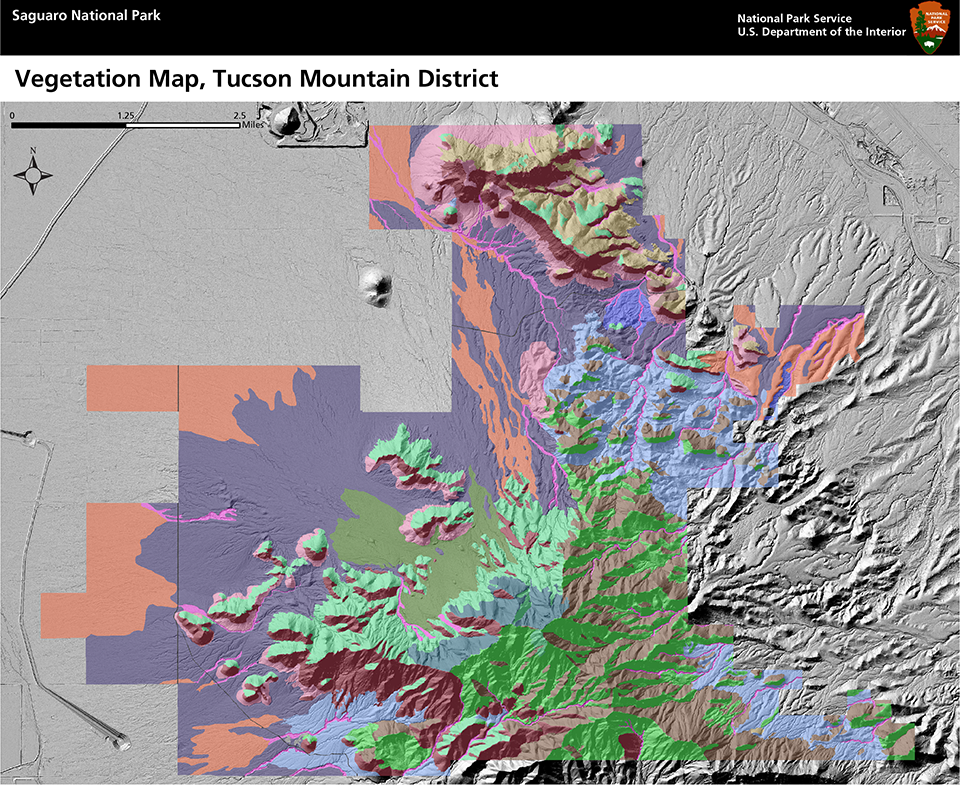
New Tools for Park Managers
Vegetation Mapping Completed for Saguaro National Park
From 2010 to 2018, the Sonoran Desert Network conducted vegetation mapping at Saguaro National Park. That project is now completed. A total of 97 distinct vegetation associations were described: 83 exclusively at the Rincon Mountain District, 9 exclusively at the Tucson Mountain District, and 5 occurring in both districts. These communities ranged from low-elevation creosote (Larrea tridentata) shrublands spanning broad alluvial fans to mountaintop Douglas fir (Pseudotsuga menziesii) forests on the slopes of Rincon Peak. All 97 communities were described at the association level, through detailed narratives including lists of species found in each association, their abundance, landscape features, and overall community structural characteristics. Only 15 of the 97 vegetation types were existing “accepted” types within the National Vegetation Classification. The others are newly described and specific to Saguaro National Park. They will be proposed for formal status within the NVC. For more details, read our web article about this project.
New Exotic Plants Dashboard Available for Southwest Network Collaboration parks
Southwest Network Collaboration (SWNC) staff have debuted a new Exotic Plants Data Dashboard for park managers, Invasive Plant Management Teams, and other resource staff. The dashboard displays quality-controlled data on invasive-plant location and density in a map-based interface and allows for user interaction and filtering of results. A key feature is timeliness. By automating a number of required data management procedures, final information is available soon after the field sampling is complete. Shrinking the time between observation and treatment can dramatically improve the efficacy of weed management in SWNC parks. Due to certain limitations, the dashboard is currently accessible only by NPS personnel. Interested staff can contact Henry Whitenack for information on how to access and use the dashboard—VPN required.
Air Quality Dashboard Update
Our friends at the Air Resources Division have updated their Park Conditions & Trends page with 2018 data. This release includes new summary information about the average visible range (miles) on clearest and haziest days in a given year. They have also added a critical-load analysis that compares whether modeled nitrogen deposition values from sources of air pollution are expected to cause harm to various ecosystem components within each national park. They plan to release 2019 data in Spring 2021.
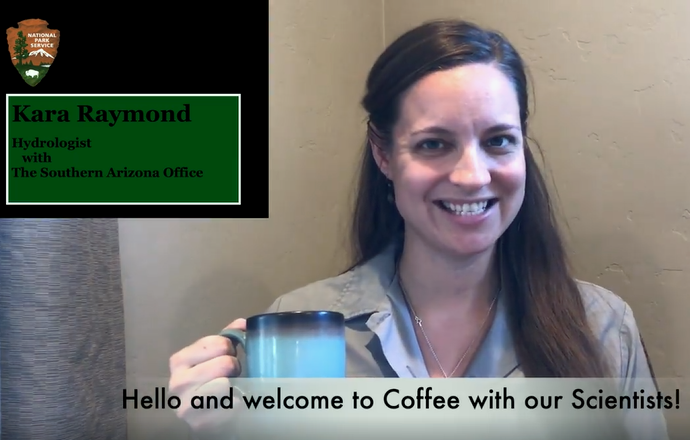
Staying in Touch: Improvements to Information Transfer
Arizona Parks Festival Goes Virtual
On August 22–23, the Sonoran Desert Network and Desert Research Learning Center joined 27 other parks and partners to host the virtual Arizona Parks Festival, held as a Facebook Event due to the covid-19 global pandemic. Our staff wrote, filmed, and produced two videos for this event: “Coffee with Our Scientists” and “Science in Parks: The Sonoran Desert Network and Desert Research Learning Center.” SODN/DRLC staff also played a central role in organizing the event, developing programs, arranging speakers and—most critically, given the short timeframe—applying technical expertise to shift from traditional programs to an online event.
Third-Thursday Webinars
To adapt to the limited travel and meeting opportunities posed by the pandemic, we instituted the monthly “Third Thursday” webinar series. The initial presentations (updates on network monitoring and use of management assessment points) were made to National Park Service staff via Teams. But in partnership with Tucson Audubon, the webinars will continue as a Zoom lecture series available to park staff and the public. Watch your email and the SODN/DRLC Facebook page for announcements about upcoming webinars. To suggest a topic or host a presentation, contact Andy Hubbard.
Transition to Online Annual Reporting
To reduce the time and costs of routine reporting, SODN plans to shift annual reporting from the NPS Publication Series to web articles. The NPS Publication Series will still be used for reporting on discrete research projects (like inventories), protected data, and more comprehensive trend and synthesis reports. To see an example of our new annual reporting model, visit our most recent climate/hydrology report for Gila Cliff Dwellings National Monument.
Science Webpages Need a Boost? Let Us Help!
The SODN writer-editor continued working with interpretive staff from Southwest Network Collaboration parks to incorporate inventory and monitoring (and other science) content directly into park websites. These win-win efforts enhance park resource content while broadening the reach of I&M science.
- To reinvigorate your park’s science content, contact Alice Wondrak Biel, who will provide everything your webmaster needs (if you're from a SODN or NCPN park not shown on the map below, she will find you if you don't find her first).
- Webmaster short on time? Alice will do the CMS work for you! (Deals like that don't come along every day.)
- Want to see what you'd be getting? Check out examples of the I&M-enhanced pages by selecting any of the parks in the map below.
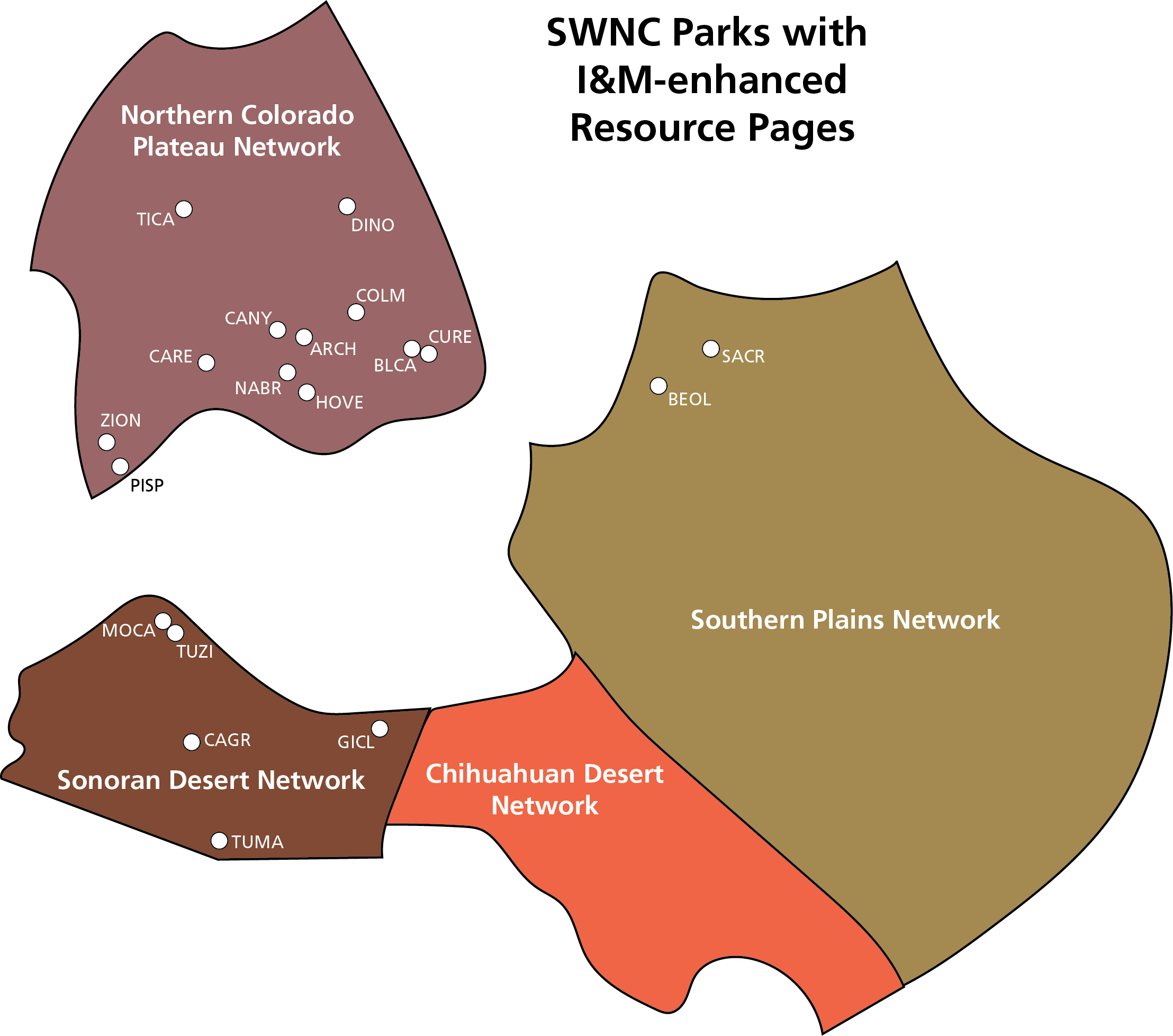
Employee Spotlight: Interns!
Like everything else this year, maintaining our internship program has come with its own unique set of challenges. But the people the program supports are essential to our operations, and to the educational mission of the Desert Research Learning Center. In this issue of the Heliograph, we're shining the Employee Spotlight on two of our current Student Conservation Association interns, for whose contributions and perseverance we could not be more grateful.
|
Michelle Szeto is an intern with the SODN aquatic ecology program, helping collect data on water quality and quantity. Her one-year internship began in July of this year. Michelle is from Queens, New York City. At Cornell University, she studied the conditions in which polyphosphate-accumulating organisms accumulate and release phosphorus in the natural landscape. Excessive phosphorus in bodies of water is known to cause algal blooms which can be detrimental to people, aquatic plants, and animals. While working at the NYC Department of Environmental Protection, Michelle learned a lot about public infrastructure and different challenges relative to water and wastewater. She enjoys learning about environmental impacts from multiple angles. |
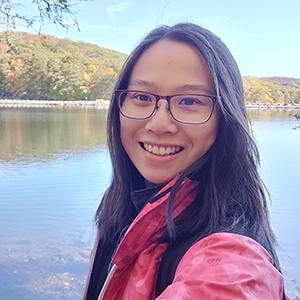
Michelle Szeto |
|
Bryce Lewis-Smith is assisting with vegetation sampling for the uplands protocol. Bryce’s six-month internship began in mid-July and will end in late December. Originally from Snohomish, Washington, Bryce graduated from Occidental College, where his senior thesis sought to better inform pollinator conservation efforts by analyzing the effects of anthropogenic stressors on bumblebee species distributions in Southern California. As a researcher and activist, Bryce aspires to use skills in quantitative analysis, and his passion for cooperation and community, to effect social change. His career goal is to mobilize future generations of informed activists by creating accessible and inclusive outdoor education programs that increase participation in environmental science. |
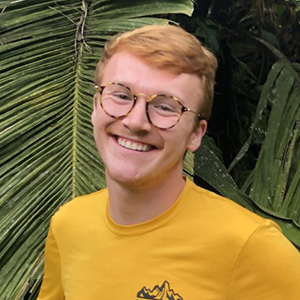
Bryce Lewis-Smith |
What has been the most unexpected or interesting thing you've learned about the Sonoran Desert region?
MS: I had never been to a desert before so I was surprised at the diversity and abundance of plant life here. I am also constantly surprised at how everything is egregiously prickly or sharp.
BLS: Nurse plants, and their ecological roles within the Sonoran Desert, are a fun discovery! I had always learned about them in my botanical courses but seeing the community of plants growing under pricklypears and creosote has brought these concepts to life.
What has been the hardest adjustment for you coming to live and work here?
MS: I had to get used to the very hot and dry weather, and also the large daily fluctuations in temperature, especially as it got cooler.
BLS: Moving during a global pandemic is difficult in itself, but the added stress of not having a support system of friends and family has been a really difficult adjustment. I had never been to Tucson before and don’t have a community out here. Being in this position during an election year and the pandemic has been really isolating.
How have you found doing science in the NPS to be different than doing it for other organizations or as part of college work?
MS: There is a lot more field work than I expected, which is great. In my experience, it has always been the other way around. The [SODN] science is less rooted in “high science academia” than in public service: making sure water is safe for public use; informing the public about climate and weather conditions; taking inventories to educate the public on the plant and animal life that exists in the park; ensuring ecosystems are healthy and minimizing risks posed by invasive species, drought, and fire.
BLS: Conducting science through the National Park Service, I feel as if the data we are collecting has a higher likelihood of influencing conservation efforts within the parks. Additionally, because our research specializes in vegetation, I feel like I’m taking a crash course in Sonoran Desert plants—and every field hitch is a pop quiz.

Andy Hubbard Wins Director's Award
Sonoran Desert Network Program Manager Andy Hubbard recently earned one of the National Park Service's highest honors: the 2018 Director's Award for Professional Excellence in Natural Resource Stewardship. Andy was recognized for his instrumental role in establishing the Desert Research Learning Center and for 18 years of leadership in natural resource stewardship for many parks.
From the nomination: Andy was the Sonoran Desert Network’s first program manager, initially running it out of his temporary home at a hotel before obtaining desk space at the University of Arizona. Today, the network provides practical scientific information on vegetation, soils, water resources, and mid-sized mammals to managers of 11 NPS units in southern Arizona and New Mexico. The network's home is the Desert Research Learning Center—an unwanted Bureau of Land Management facility when Andy saw it 10 years ago and started the laborious process of getting it transferred to the NPS. Today’s DRLC houses the SODN offices, meeting space, and apartments that provide housing for interns, volunteers, and visiting researchers. All of this was achieved through grants, partnerships, and in-kind services; the DRLC does not receive base funding. The many intern and volunteer opportunities at SODN and the DRLC reflect Andy's passion for fostering the next generation of NPS stewards. The DRLC is helping to inspire student interns and volunteers of all ages to care deeply about the desert environment and its future.
Andy will receive his award in a virtual ceremony on December 16, 2020, at noon MST. Congratulations, Andy!
Southwest Network Collaboration Reorganization Completed
The Southwest Network Collaboration (the Sonoran Desert, Chihuahuan Desert, and Southern Plains networks) has completed a staffing reorganization plan to ensure the financial sustainability of all three networks. Under the new design, each network will continue to have its own dedicated program manager and field staff. Program scientists will be shared (by protocol) across network boundaries. In addition, the Northern Colorado Plateau Network will contribute and share SWNC data-management duties. We expect these shifts to improve program efficacy while easing fixed personnel costs.
Want to Know More?
Read past issues of The Heliograph!Tags
- casa grande ruins national monument
- chiricahua national monument
- coronado national memorial
- fort bowie national historic site
- gila cliff dwellings national monument
- montezuma castle national monument
- organ pipe cactus national monument
- saguaro national park
- tonto national monument
- tumacácori national historical park
- tuzigoot national monument
- newsletter
- sonoran desert network
